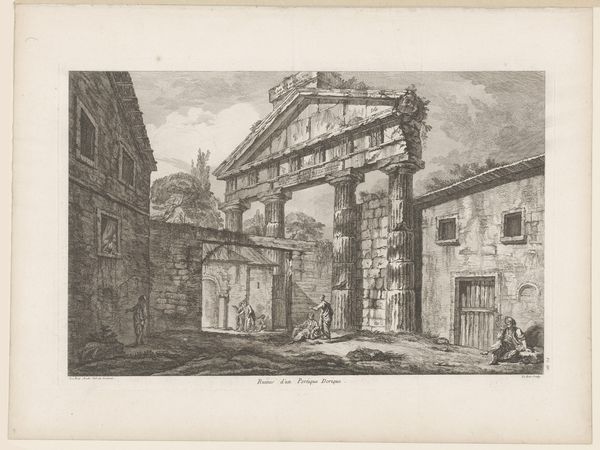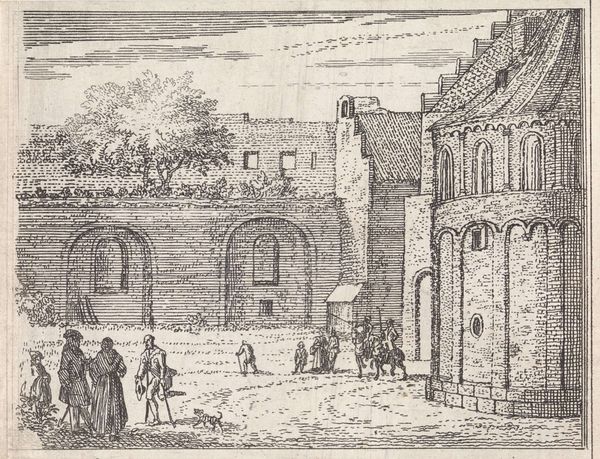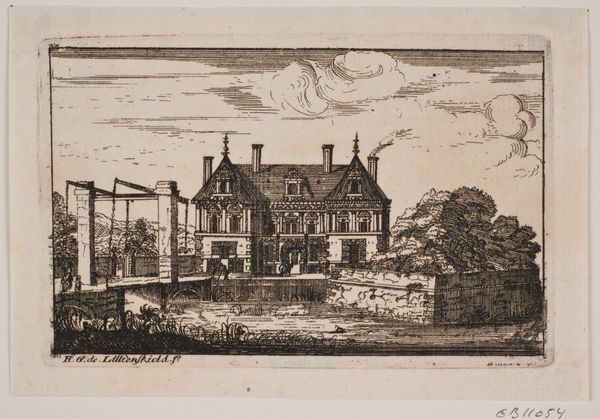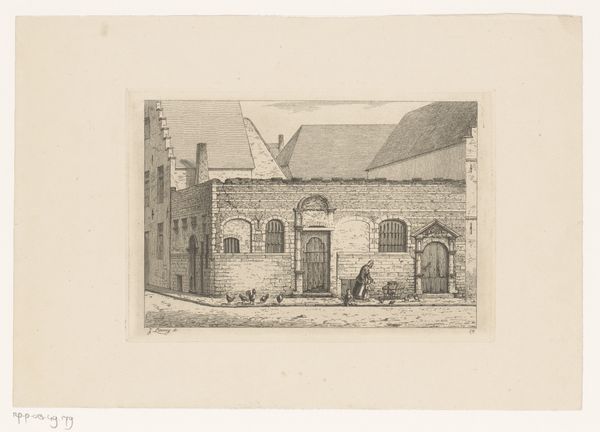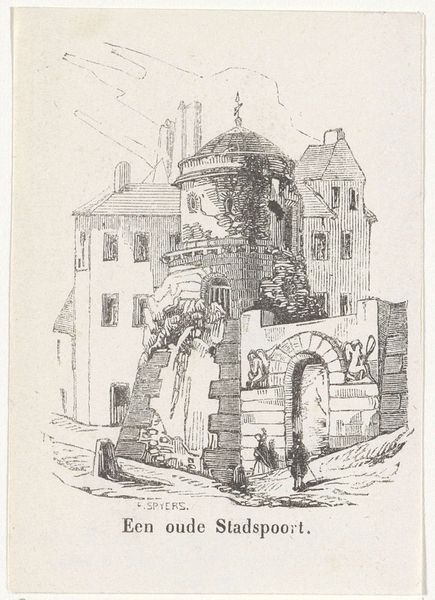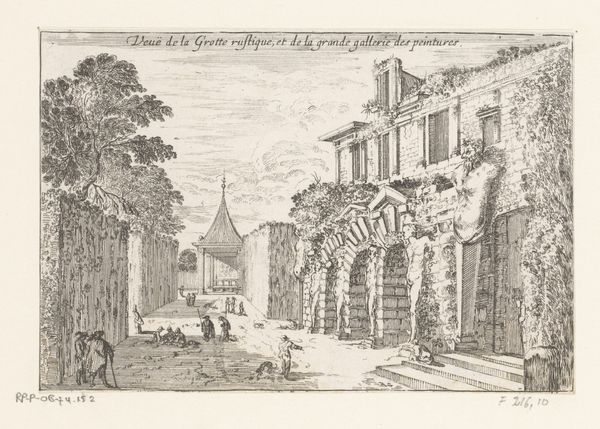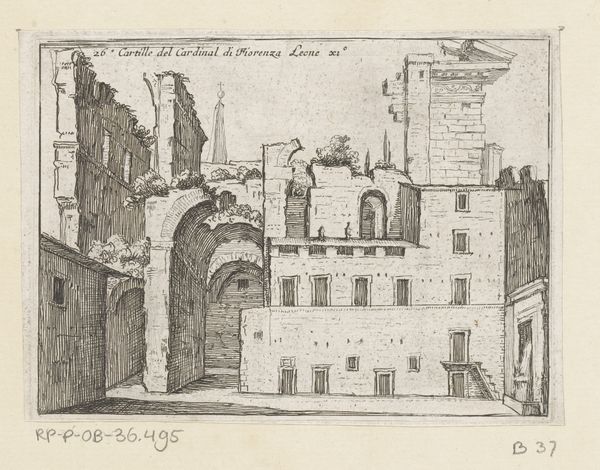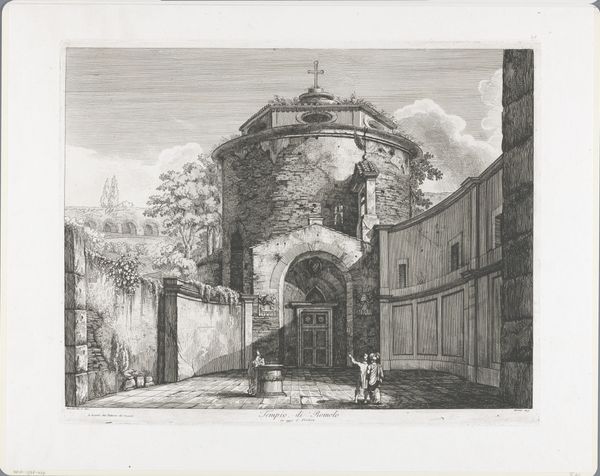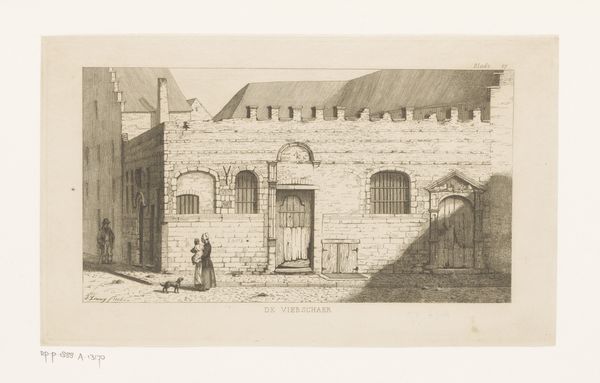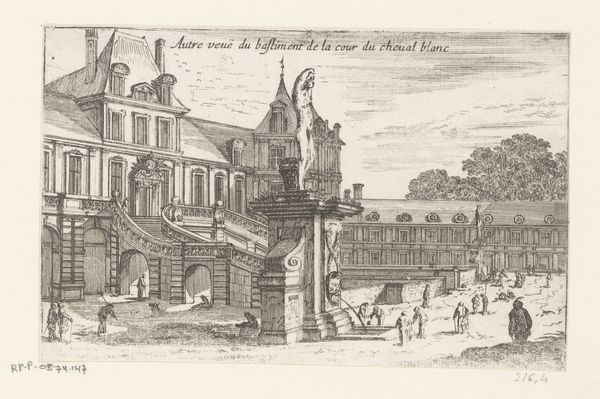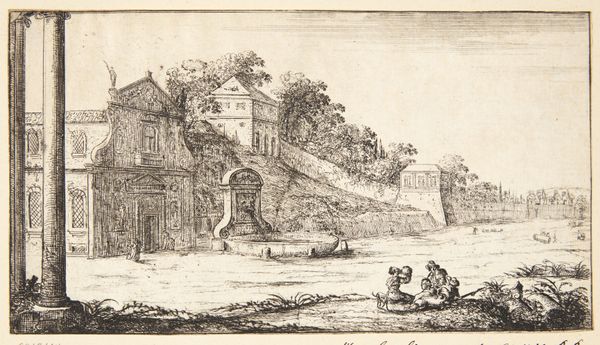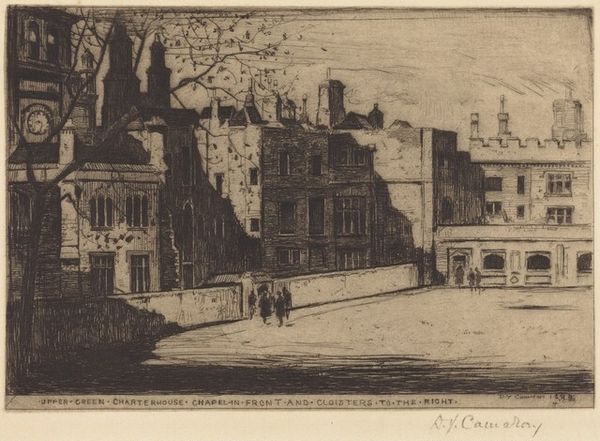
drawing, etching, ink, engraving, architecture
#
architectural sketch
#
drawing
#
aged paper
#
mechanical pen drawing
#
etching
#
old engraving style
#
sketch book
#
landscape
#
romanesque
#
personal sketchbook
#
ink
#
sketchwork
#
pen-ink sketch
#
line
#
pen work
#
cityscape
#
storyboard and sketchbook work
#
engraving
#
architecture
Dimensions: height 95 mm, width 129 mm
Copyright: Rijks Museum: Open Domain
Curator: This delicate engraving, created around 1629, is entitled "Ruïnes in Rome," the work of Giovanni Battista Mercati. Editor: It’s immediately striking how the delicate line work contrasts with the grand, almost austere scene. There’s a curious emptiness, despite the figures. Curator: Precisely. The lines define form, yet their fineness lends an airiness. Look closely at the layering – how Mercati builds depth and mass. The light source, though not explicit, seems to emanate from the arched opening at the center, drawing the eye through a progression of architectural elements. Editor: That archway. The symbolic potential is huge, isn't it? Arches often represent transitions, passages… but here, framed by the rough stone, and glimpsed again within the opening of the far gate, there is a clear message of decline of Roman power, of broken empires, of passage to what's next... it takes on a more melancholy feel. It becomes a frame within a frame, a sort of melancholic emblem. Curator: The ruined architecture absolutely serves to emphasize such symbolic weight. We have, therefore, not only geometric forms – arches, rectangles – but we also have syntax here; forms relating in ways that express temporality. What are ruins if not testaments to temporal processes? Editor: Absolutely! Also, consider the human figures in relation to these massive walls; one carries a huge load, struggling within the historical weight and context. We, ourselves, struggle. Mercati's composition prompts an implicit, internal psychological projection within us. We become a part of this ruins and this reality. Curator: Note as well the textures, carefully created with the engraver's burin to articulate the differences between smooth stone and weathered brick. Such contrast serves to highlight the effects of entropy on classical forms. Editor: Considering that idea and zooming back out... I see something very interesting here! This ruined-landscape is an invitation to reflect upon our relationship with history; it is not about static ruins, but about the transformation, the inevitable changes that define our very humanity. The drawing pushes me to think of the flow and power of history as an element that makes us both free and confined! Curator: I quite agree! Mercati delivers not only a beautiful image, but also encourages critical contemplation through composition and textural variety. Editor: An image prompting us to accept a difficult idea. A quiet image indeed, but an urgent one too.
Comments
No comments
Be the first to comment and join the conversation on the ultimate creative platform.
